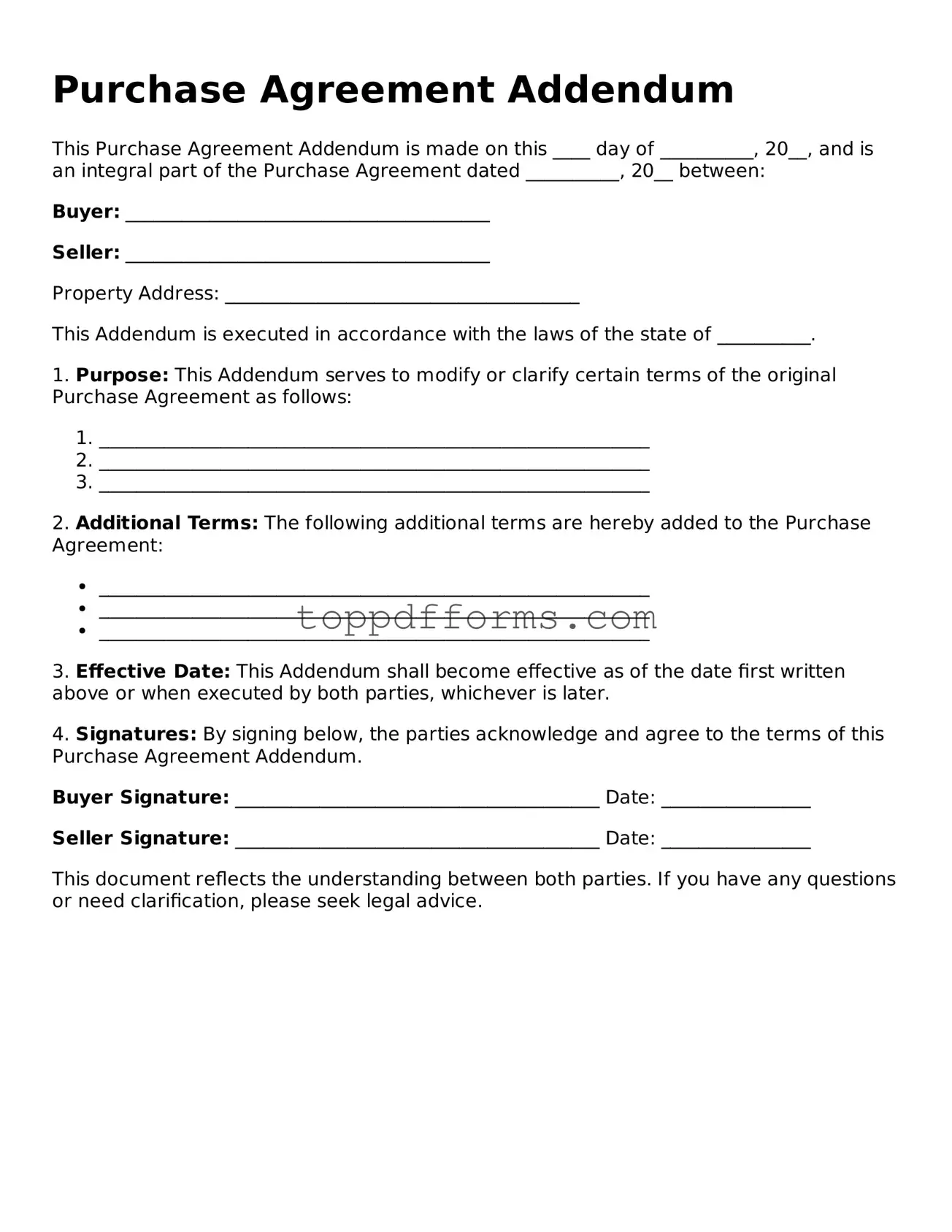What is a Purchase Agreement Addendum?
A Purchase Agreement Addendum is a document that modifies or adds to the original purchase agreement between a buyer and a seller. This addendum can clarify specific terms, conditions, or contingencies that were not fully addressed in the original agreement. It serves to ensure that both parties are on the same page and can help prevent misunderstandings later on.
When should I use a Purchase Agreement Addendum?
You should consider using a Purchase Agreement Addendum when you need to change or add details to your existing purchase agreement. This can include updates to closing dates, changes in purchase price, or additional contingencies such as repairs or inspections. If circumstances change after the original agreement is signed, an addendum can provide a formal way to document those changes.
Who needs to sign the Purchase Agreement Addendum?
Both the buyer and the seller must sign the Purchase Agreement Addendum for it to be valid. Each party should review the changes carefully before signing. It’s important that everyone involved understands and agrees to the modifications being made.
Is a Purchase Agreement Addendum legally binding?
Yes, a Purchase Agreement Addendum is legally binding once both parties sign it. It becomes part of the original purchase agreement, and both the buyer and seller are obligated to adhere to the terms outlined in the addendum. Always ensure that the addendum is clear and specific to avoid any potential disputes.
How do I create a Purchase Agreement Addendum?
Creating a Purchase Agreement Addendum typically involves drafting a document that outlines the specific changes or additions you want to make. You can find templates online or consult with a legal professional to ensure that the addendum meets all necessary legal requirements. Be sure to include details like the date, the original agreement reference, and clear language describing the changes.
Can I use a Purchase Agreement Addendum for any type of property transaction?
Yes, a Purchase Agreement Addendum can be used for various types of property transactions, including residential and commercial real estate deals. However, the specific terms and conditions may vary based on the type of transaction and local laws. It’s wise to ensure that the addendum complies with any applicable regulations in your area.
What happens if one party does not agree to the changes in the addendum?
If one party does not agree to the changes proposed in the Purchase Agreement Addendum, the modifications will not take effect. Both parties must reach a mutual agreement for the addendum to be valid. In such cases, it may be necessary to negotiate further or seek alternative solutions to address the issues at hand.
Can I cancel the Purchase Agreement after signing an addendum?
Canceling a Purchase Agreement after signing an addendum can be complicated. The ability to cancel depends on the terms outlined in the original agreement and the addendum. If there are contingencies that allow for cancellation, you may proceed. Otherwise, you may need to negotiate with the other party or seek legal advice to understand your options.
